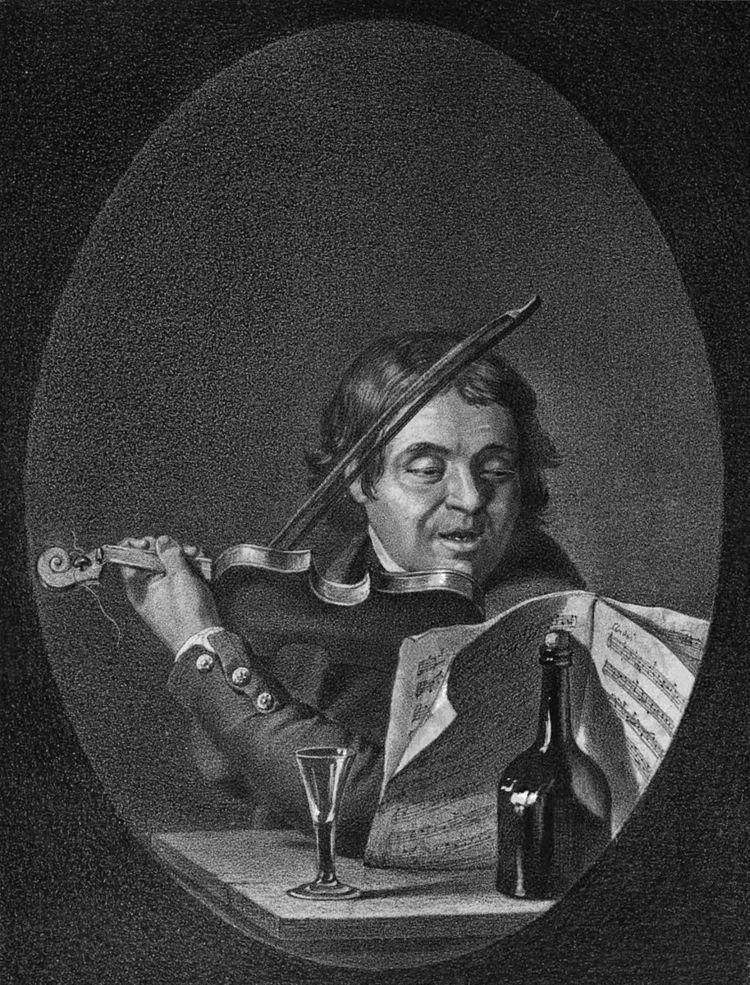 | ||
Stolta stad! (Proud city!), is one of the Swedish poet and performer Carl Michael Bellman's best-known and best-loved works, from his 1790 collection, Fredman's Epistles, where it is No. 33. It combines spoken sections (Was ist das?, with words in German, Swedish, and French) and song (in Swedish). It has been described as Swedish literature's most congenial portrait of its capital city.
Contents
The epistle is subtitled "1:o Om Fader Movitz's öfverfart til Djurgården, och 2:o om den dygdiga Susanna." (Firstly about father Movitz's crossing to Djurgården, and secondly about the clever Susanna).
Context
Carl Michael Bellman is the central figure in Swedish song, known for his 1790 Fredman's Epistles and his 1791 Fredman's Songs. He played the cittern, accompanying himself as he performed his songs at the royal court.
Jean Fredman is a fictional character and the supposed narrator in Bellman's epistles and songs, based on a real watchmaker of Bellman's Stockholm. The epistles paint a picture of the demimonde life of the city during the eighteenth century, where strong drink and beautiful "nymphs" like Ulla Winblad create a rococo picture of life, blending classical allusion and pastoral description with harsh reality.
Epistle
The Epistle begins with a long spoken section, imitative of a crowded boat with people playing cards and others trying to move about; parts are in German and French. The song has four verses, with two further spoken sections. Each verse has twelve lines, with the rhyming pattern AABBCCDDDEEE; of these, the lines AA both begin with Corno, and all the lines CDD and EEE end with Corno. The song is in 4/4 time and is marked Marche. The Epistle is dated 16 October 1771. Three of the spoken sections end with a mention that a "nymph", Susanna, is to sing; only this and No. 67 (Fader Movitz, bror) among the epistles call for a woman's voice, but the identify of "Susanna" is not known. The melody was said by Nils Afzelius to come from the aria "Regardez ces traits" from Monsigny's opera Le cadi dupé, but this is disputed by the musicologist James Massengale.
Reception
The Epistle has been recorded by Fred Åkerström and Sven-Bertil Taube. It has been performed in costume by Thord Lindé.
Citing the Epistle, Anita Ankarcrona observes that Bellman was "the first, and perhaps the greatest, of all Stockholm depicters."
The Bellman Society observes that Sweden's capital has never been portrayed with mightier trumpet blasts or more skilfully than in this Epistle, "Swedish literature's most congenial portrait of Stockholm." In its view, the work is neither poem nor song, but a song-drama of a kind created by Bellman himself out of a susurrus of voices around Skeppsbro. Soundscape, it suggests, turns into "a landscape painting, a stunningly beautiful snapshot of a Stockholm crowd in the 1770s".
Writing in the Haga-Brunnsviken Nytt, Gunnel Bergström notes that in verse 3, Ulla Winblad climbs on board, and Movitz becomes randy.
A tour company that shows people around Bellman's Stockholm has chosen the name "Stolta Stad".
